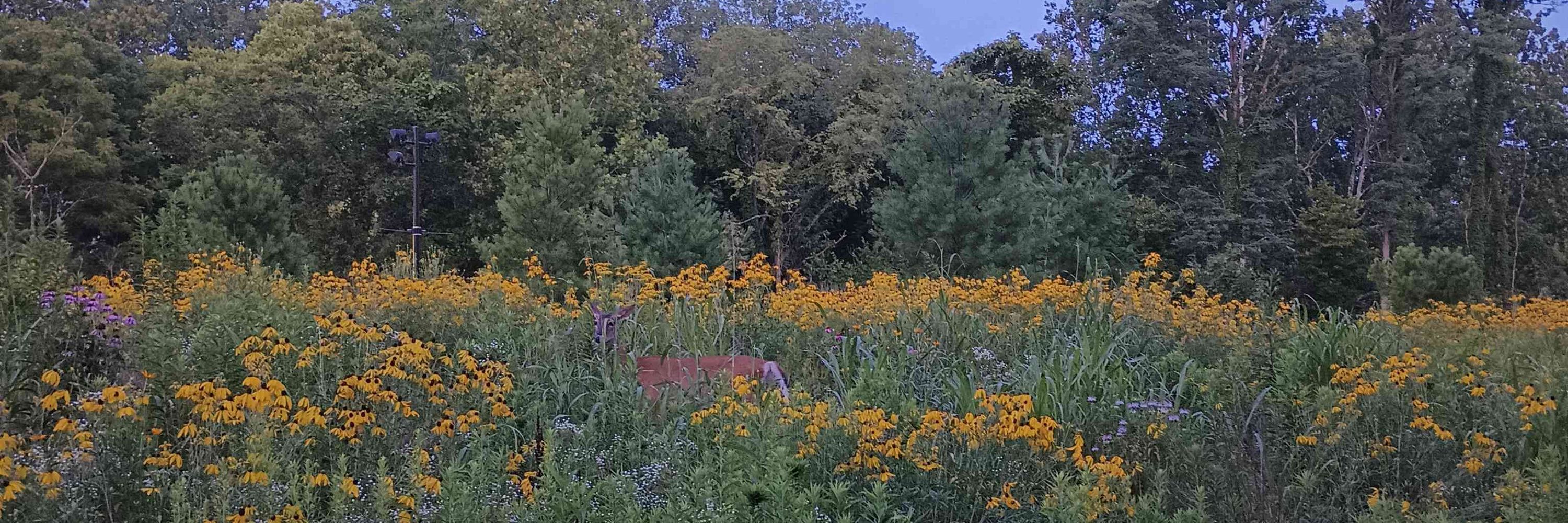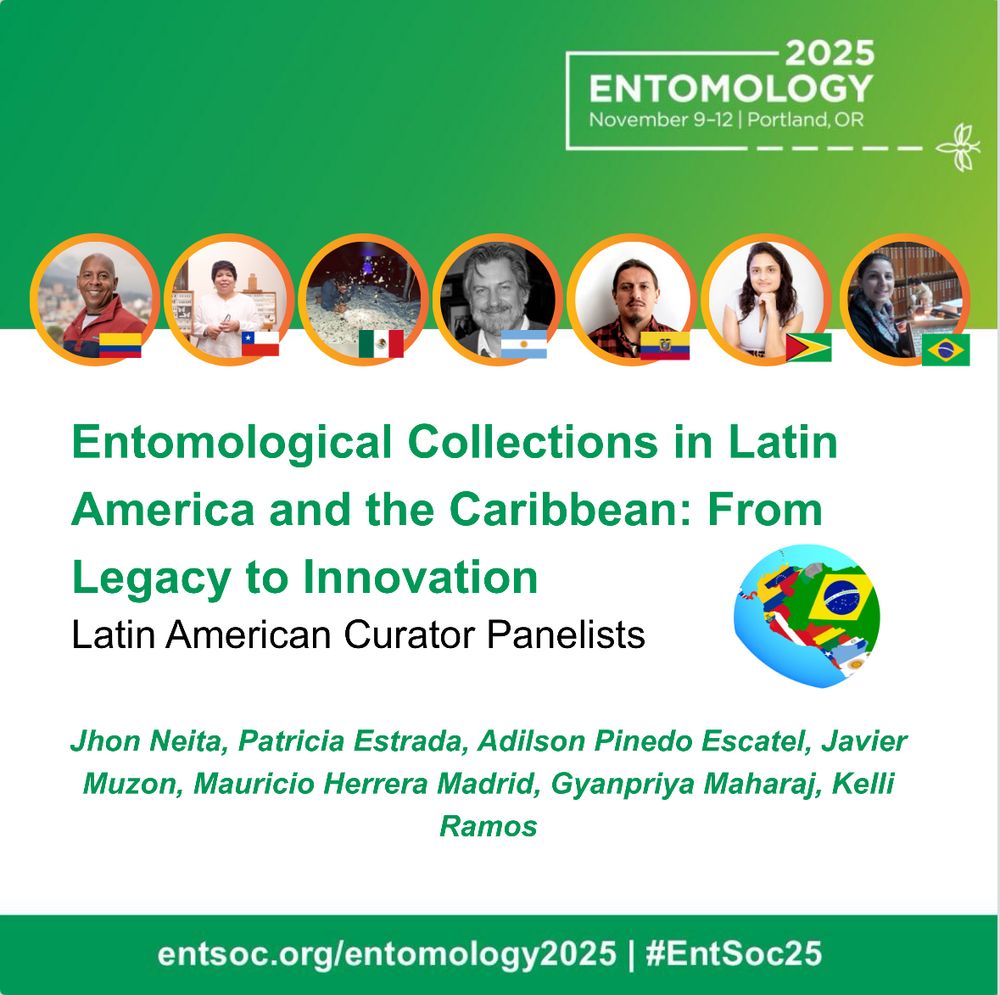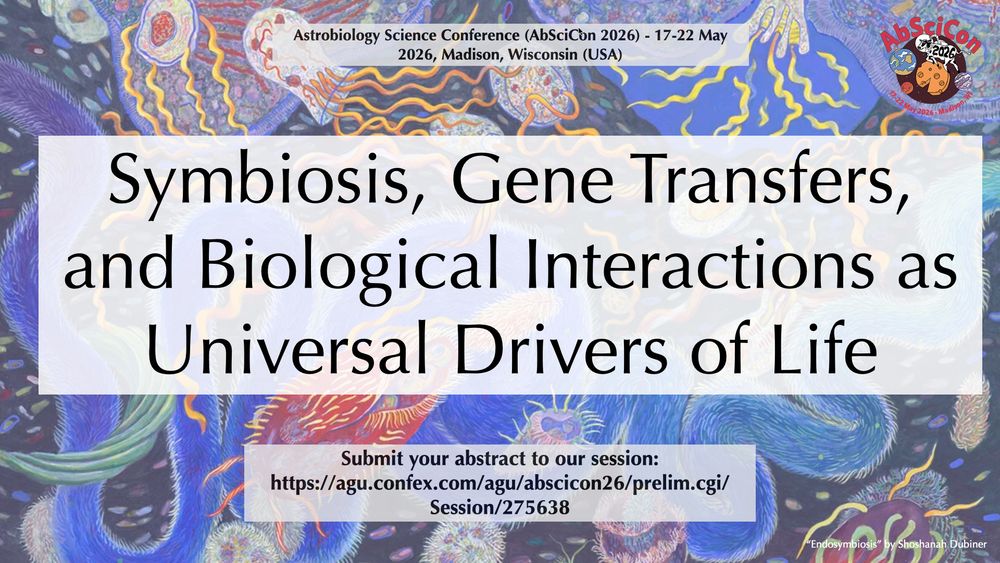
Lilian Caesar
@liliancaesar.bsky.social
Postdoc at Newton Lab (@IUBiology). Eco-evolution of symbiosis. Microbiomes | Bees | Virus, Bact, Fungi. 🇧🇷 in 🇺🇲. https://liliancaesar.com/
Reposted by Lilian Caesar
Fungi coat the eggs of stinkbugs, creating a shield that protects the embryos from parasitic wasps, researchers report.
Learn more: https://scim.ag/43kl3np
Learn more: https://scim.ag/43kl3np
November 10, 2025 at 11:26 PM
Fungi coat the eggs of stinkbugs, creating a shield that protects the embryos from parasitic wasps, researchers report.
Learn more: https://scim.ag/43kl3np
Learn more: https://scim.ag/43kl3np
Reposted by Lilian Caesar
🚨vConTACT3 preprint live!🚨(Peer Review soon...!)
vConTACT3 delivers a unified, scalable, and transparent framework for genome-based virus taxonomy — helping translate big viral data into systematic classification.
🔗 Read the preprint: doi.org/10.1101/2025...
Improvements details below 👇
vConTACT3 delivers a unified, scalable, and transparent framework for genome-based virus taxonomy — helping translate big viral data into systematic classification.
🔗 Read the preprint: doi.org/10.1101/2025...
Improvements details below 👇

Scalable and systematic hierarchical virus taxonomy with vConTACT3
Viruses are key players in diverse ecosystems, but studying their impacts is technically and taxonomically challenging. Taxonomic complexities derive from undersampling, diverse DNA and RNA genomes wi...
doi.org
November 7, 2025 at 4:36 PM
🚨vConTACT3 preprint live!🚨(Peer Review soon...!)
vConTACT3 delivers a unified, scalable, and transparent framework for genome-based virus taxonomy — helping translate big viral data into systematic classification.
🔗 Read the preprint: doi.org/10.1101/2025...
Improvements details below 👇
vConTACT3 delivers a unified, scalable, and transparent framework for genome-based virus taxonomy — helping translate big viral data into systematic classification.
🔗 Read the preprint: doi.org/10.1101/2025...
Improvements details below 👇
Reposted by Lilian Caesar
🚨New preprint out!
We present a foundational genomic resource of human gut microbiome viruses. It delivers high-quality, deeply curated data spanning taxonomy, predicted hosts, structures, and functions, providing a reference for gut virome research. (1/8)
www.biorxiv.org/content/10.1...
We present a foundational genomic resource of human gut microbiome viruses. It delivers high-quality, deeply curated data spanning taxonomy, predicted hosts, structures, and functions, providing a reference for gut virome research. (1/8)
www.biorxiv.org/content/10.1...

November 6, 2025 at 5:26 PM
🚨New preprint out!
We present a foundational genomic resource of human gut microbiome viruses. It delivers high-quality, deeply curated data spanning taxonomy, predicted hosts, structures, and functions, providing a reference for gut virome research. (1/8)
www.biorxiv.org/content/10.1...
We present a foundational genomic resource of human gut microbiome viruses. It delivers high-quality, deeply curated data spanning taxonomy, predicted hosts, structures, and functions, providing a reference for gut virome research. (1/8)
www.biorxiv.org/content/10.1...
Enjoying Portland’s fall moss before #EntSoc2025! Join me Sunday (8–8:20 AM, Room B114) for my talk on how space and species shape stingless bee colony microbiomes — part of the symposium 'Inside and Out: Roles of Environmental and Gut Symbioses' with lots of great talks!

November 7, 2025 at 9:07 PM
Enjoying Portland’s fall moss before #EntSoc2025! Join me Sunday (8–8:20 AM, Room B114) for my talk on how space and species shape stingless bee colony microbiomes — part of the symposium 'Inside and Out: Roles of Environmental and Gut Symbioses' with lots of great talks!
Reposted by Lilian Caesar
Preprint: Bacteria sense virus-induced genome degradation via methylated mononucleotides
tinyurl.com/ch3damp
We show how molecular byproducts released during virus-induced cell exploitation are used as signals to trigger host immunity
Revealed by the amazing Ilya Osterman. See his thread below👇
tinyurl.com/ch3damp
We show how molecular byproducts released during virus-induced cell exploitation are used as signals to trigger host immunity
Revealed by the amazing Ilya Osterman. See his thread below👇

November 6, 2025 at 10:39 AM
Preprint: Bacteria sense virus-induced genome degradation via methylated mononucleotides
tinyurl.com/ch3damp
We show how molecular byproducts released during virus-induced cell exploitation are used as signals to trigger host immunity
Revealed by the amazing Ilya Osterman. See his thread below👇
tinyurl.com/ch3damp
We show how molecular byproducts released during virus-induced cell exploitation are used as signals to trigger host immunity
Revealed by the amazing Ilya Osterman. See his thread below👇
Reposted by Lilian Caesar
🧬 🦠 🏙️
Urban vs rural lifestyles create dramatically different gut microbiomes. But how do these different gut microbiomes affect the host?
Excited to share our new paper: www.biorxiv.org/content/10.1...
Urban vs rural lifestyles create dramatically different gut microbiomes. But how do these different gut microbiomes affect the host?
Excited to share our new paper: www.biorxiv.org/content/10.1...


November 5, 2025 at 2:04 AM
🧬 🦠 🏙️
Urban vs rural lifestyles create dramatically different gut microbiomes. But how do these different gut microbiomes affect the host?
Excited to share our new paper: www.biorxiv.org/content/10.1...
Urban vs rural lifestyles create dramatically different gut microbiomes. But how do these different gut microbiomes affect the host?
Excited to share our new paper: www.biorxiv.org/content/10.1...
Reposted by Lilian Caesar
Hi everyone, a few years ago, we started a list of labs studying bacterial immunty for students, editors, conference organizers... (currently n=79).
Update time ! Send me a message to 1) add your lab or others 2) Correct info
docs.google.com/spreadsheets...
#Phagesky #Microsky
Update time ! Send me a message to 1) add your lab or others 2) Correct info
docs.google.com/spreadsheets...
#Phagesky #Microsky

Labs in bacterial immunity
docs.google.com
November 4, 2025 at 3:06 PM
Hi everyone, a few years ago, we started a list of labs studying bacterial immunty for students, editors, conference organizers... (currently n=79).
Update time ! Send me a message to 1) add your lab or others 2) Correct info
docs.google.com/spreadsheets...
#Phagesky #Microsky
Update time ! Send me a message to 1) add your lab or others 2) Correct info
docs.google.com/spreadsheets...
#Phagesky #Microsky
Reposted by Lilian Caesar
#EntSoc25
Tuesday Nov 11 at 8am in Portland Ballroom 256
Meet our Curator Panelists
Jhon Neita 🇨🇴, Patricia Estrada 🇨🇱, Adilson Pinedo Escatel 🇲🇽, Javier Muzon 🇦🇷,Mauricio Herrera Madrid 🇪🇨, Gyanpriya Maharaj 🇬🇾, Kelli Ramos 🇧🇷
Tuesday Nov 11 at 8am in Portland Ballroom 256
Meet our Curator Panelists
Jhon Neita 🇨🇴, Patricia Estrada 🇨🇱, Adilson Pinedo Escatel 🇲🇽, Javier Muzon 🇦🇷,Mauricio Herrera Madrid 🇪🇨, Gyanpriya Maharaj 🇬🇾, Kelli Ramos 🇧🇷

November 4, 2025 at 10:42 PM
#EntSoc25
Tuesday Nov 11 at 8am in Portland Ballroom 256
Meet our Curator Panelists
Jhon Neita 🇨🇴, Patricia Estrada 🇨🇱, Adilson Pinedo Escatel 🇲🇽, Javier Muzon 🇦🇷,Mauricio Herrera Madrid 🇪🇨, Gyanpriya Maharaj 🇬🇾, Kelli Ramos 🇧🇷
Tuesday Nov 11 at 8am in Portland Ballroom 256
Meet our Curator Panelists
Jhon Neita 🇨🇴, Patricia Estrada 🇨🇱, Adilson Pinedo Escatel 🇲🇽, Javier Muzon 🇦🇷,Mauricio Herrera Madrid 🇪🇨, Gyanpriya Maharaj 🇬🇾, Kelli Ramos 🇧🇷
Reposted by Lilian Caesar
Had to draw a cartoon for this fascinating finding!
Defensive fungal symbiosis on insect hindlegs: www.science.org/doi/10.1126/...
#SymbioSky
Defensive fungal symbiosis on insect hindlegs: www.science.org/doi/10.1126/...
#SymbioSky

November 1, 2025 at 4:59 PM
Had to draw a cartoon for this fascinating finding!
Defensive fungal symbiosis on insect hindlegs: www.science.org/doi/10.1126/...
#SymbioSky
Defensive fungal symbiosis on insect hindlegs: www.science.org/doi/10.1126/...
#SymbioSky
Reposted by Lilian Caesar
Now online! Bacterial tubular networks channel carbohydrates in insect endosymbiosis

Bacterial tubular networks channel carbohydrates in insect endosymbiosis
Bacteria with an intracellular lifestyle need to feed from inside their host cells. This study shows an adaptation of certain symbiotic bacteria, allowing them to actively retrieve nutrients from the host. High-pressure cryofixation has been combined with volume electron microscopy and in situ high spatial resolution chemical analysis. It reveals a complex bacterial membranous network that increases the exchange interface between the bacteria and host cytosol and maximizes carbohydrate acquisition.
dlvr.it
October 28, 2025 at 2:59 PM
Now online! Bacterial tubular networks channel carbohydrates in insect endosymbiosis
Reposted by Lilian Caesar
I cannot believe our work is finally out there and in @journal-evo.bsky.social ! This was an enormous group effort!
We provide an updated estimate of the number of buzz pollinated angiosperm species, genera, and families, look at consequences for diversification, number of transitions, and more!
We provide an updated estimate of the number of buzz pollinated angiosperm species, genera, and families, look at consequences for diversification, number of transitions, and more!

October 23, 2025 at 5:34 AM
I cannot believe our work is finally out there and in @journal-evo.bsky.social ! This was an enormous group effort!
We provide an updated estimate of the number of buzz pollinated angiosperm species, genera, and families, look at consequences for diversification, number of transitions, and more!
We provide an updated estimate of the number of buzz pollinated angiosperm species, genera, and families, look at consequences for diversification, number of transitions, and more!
Reposted by Lilian Caesar
Our latest Research Briefing is out, on using metaproteomics and stable isotope labelling to uncover rare species involved in carbon turnover www.nature.com/articles/s41...

Identifying rare and active species that drive carbon turnover in complex microbiotas - Nature Microbiology
By combining bioorthogonal non-canonical amino acid tagging, metaproteomics and stable isotope probing, we identified a rare and uncharacterized bacterium with a glycine-mediated metabolism for syntro...
www.nature.com
October 23, 2025 at 1:02 PM
Our latest Research Briefing is out, on using metaproteomics and stable isotope labelling to uncover rare species involved in carbon turnover www.nature.com/articles/s41...
Reposted by Lilian Caesar
Very excited to share the latest work from our lab, which was published today in Nature!
nature.com/articles/s41...
PhD graduate and now post-doc Sofia Dahlman, along with co-senior author Sam Forster from The Hudson and other researchers from our lab and others.
nature.com/articles/s41...
PhD graduate and now post-doc Sofia Dahlman, along with co-senior author Sam Forster from The Hudson and other researchers from our lab and others.

Isolation, engineering and ecology of temperate phages from the human gut - Nature
Human host-associated cellular products may act as induction agents for bacteriophages.
nature.com
October 15, 2025 at 9:41 PM
Very excited to share the latest work from our lab, which was published today in Nature!
nature.com/articles/s41...
PhD graduate and now post-doc Sofia Dahlman, along with co-senior author Sam Forster from The Hudson and other researchers from our lab and others.
nature.com/articles/s41...
PhD graduate and now post-doc Sofia Dahlman, along with co-senior author Sam Forster from The Hudson and other researchers from our lab and others.
Reposted by Lilian Caesar
Phages evolve fast, or do they?
In oysters, some stay identical for years.
With >1,200 phages & 600 Vibrio genomes, we reveal long-term stability and new mobile elements.
Proud of this collaborative work across our teams (Roscoff-UdeM and @epcrocha.bsky.social www.biorxiv.org/cgi/content/...
In oysters, some stay identical for years.
With >1,200 phages & 600 Vibrio genomes, we reveal long-term stability and new mobile elements.
Proud of this collaborative work across our teams (Roscoff-UdeM and @epcrocha.bsky.social www.biorxiv.org/cgi/content/...

Ecological constraints foster both extreme viral-host lineage stability and mobile element diversity in a marine community
Phages are typically viewed as very rapidly evolving biological entities. Little is known, however, about whether and how phages can establish long-term genetic stability. We addressed this eco-evolut...
www.biorxiv.org
October 12, 2025 at 9:16 PM
Phages evolve fast, or do they?
In oysters, some stay identical for years.
With >1,200 phages & 600 Vibrio genomes, we reveal long-term stability and new mobile elements.
Proud of this collaborative work across our teams (Roscoff-UdeM and @epcrocha.bsky.social www.biorxiv.org/cgi/content/...
In oysters, some stay identical for years.
With >1,200 phages & 600 Vibrio genomes, we reveal long-term stability and new mobile elements.
Proud of this collaborative work across our teams (Roscoff-UdeM and @epcrocha.bsky.social www.biorxiv.org/cgi/content/...
Reposted by Lilian Caesar
Pretty excited to share our new preprint!
Non-photosynthetic Plastid Replacement by a Primary Plastid in the Making
www.biorxiv.org/content/10.1...
Non-photosynthetic Plastid Replacement by a Primary Plastid in the Making
www.biorxiv.org/content/10.1...

October 10, 2025 at 3:34 AM
Pretty excited to share our new preprint!
Non-photosynthetic Plastid Replacement by a Primary Plastid in the Making
www.biorxiv.org/content/10.1...
Non-photosynthetic Plastid Replacement by a Primary Plastid in the Making
www.biorxiv.org/content/10.1...
Reposted by Lilian Caesar
Nominations are now open for the Dobzhansky Prize, which recognizes the accomplishments and future promise of an outstanding early-career evolutionary biologist. The award includes $5000 and an award talk at the in-person Evolution meeting. Deadline: December 1
shorturl.at/p70wY
shorturl.at/p70wY

October 7, 2025 at 9:16 PM
Nominations are now open for the Dobzhansky Prize, which recognizes the accomplishments and future promise of an outstanding early-career evolutionary biologist. The award includes $5000 and an award talk at the in-person Evolution meeting. Deadline: December 1
shorturl.at/p70wY
shorturl.at/p70wY
Reposted by Lilian Caesar
Age-related microbiome metabolites modulate splicing and chromatin accessibility in the brain https://www.biorxiv.org/content/10.1101/2025.10.03.680371v1
October 5, 2025 at 9:15 PM
Age-related microbiome metabolites modulate splicing and chromatin accessibility in the brain https://www.biorxiv.org/content/10.1101/2025.10.03.680371v1
Reposted by Lilian Caesar
Historically, viruses were thought to primarily use host cell's translational machinery. New work from @harvardcellbio.bsky.social faculty Amy Lee reveals that a giant DNA virus encodes its own IF4F initiation complex, suggesting an unexpected evolutionary innovation. www.biorxiv.org/content/10.1...

Giant DNA viruses encode a hallmark translation initiation complex of eukaryotic life
In contrast to living organisms, viruses were long thought to lack protein synthesis machinery and instead depend on host factors to translate viral transcripts. Here, we discover that giant DNA virus...
www.biorxiv.org
October 2, 2025 at 6:10 PM
Historically, viruses were thought to primarily use host cell's translational machinery. New work from @harvardcellbio.bsky.social faculty Amy Lee reveals that a giant DNA virus encodes its own IF4F initiation complex, suggesting an unexpected evolutionary innovation. www.biorxiv.org/content/10.1...
Reposted by Lilian Caesar
New pre-print: Eco-evolutionary responses of phage to different thermal regimes.
Great work led by Sam Greenrod and fun collaboration with Kayla King's lab.
1/2
www.biorxiv.org/content/10.1...
Great work led by Sam Greenrod and fun collaboration with Kayla King's lab.
1/2
www.biorxiv.org/content/10.1...

Evolutionary rescue accelerates competitive exclusion in a parasite community
Environmental stress drives biodiversity loss by altering competitive hierarchies and pushing taxa towards extinction. Parasites and their communities are particularly vulnerable to stress due to envi...
www.biorxiv.org
September 29, 2025 at 1:54 PM
New pre-print: Eco-evolutionary responses of phage to different thermal regimes.
Great work led by Sam Greenrod and fun collaboration with Kayla King's lab.
1/2
www.biorxiv.org/content/10.1...
Great work led by Sam Greenrod and fun collaboration with Kayla King's lab.
1/2
www.biorxiv.org/content/10.1...
Reposted by Lilian Caesar
Excited to be co-organizing an #AbSciCon2026 session on Symbiosis. We welcome everything from mobilomes and viruses to organelle evolution and ecological networks! Let's bring more bio to astrobio! Submit here: agu.confex.com/agu/abscicon...
#astrobiology #symbiosis
#astrobiology #symbiosis

September 29, 2025 at 5:48 PM
Excited to be co-organizing an #AbSciCon2026 session on Symbiosis. We welcome everything from mobilomes and viruses to organelle evolution and ecological networks! Let's bring more bio to astrobio! Submit here: agu.confex.com/agu/abscicon...
#astrobiology #symbiosis
#astrobiology #symbiosis
Reposted by Lilian Caesar
New article on equitable reuse of public sequencing data, published in @natmicrobiol.nature.com!
Led by the Data reuse core team @lhug.bsky.social @environmicrobio.bsky.social Cristina Moraru, @geomicrosoares.bsky.social, @folker.bsky.social and with Anke Heyer and The Data Reuse Consotrium!
Led by the Data reuse core team @lhug.bsky.social @environmicrobio.bsky.social Cristina Moraru, @geomicrosoares.bsky.social, @folker.bsky.social and with Anke Heyer and The Data Reuse Consotrium!

September 26, 2025 at 7:34 PM
New article on equitable reuse of public sequencing data, published in @natmicrobiol.nature.com!
Led by the Data reuse core team @lhug.bsky.social @environmicrobio.bsky.social Cristina Moraru, @geomicrosoares.bsky.social, @folker.bsky.social and with Anke Heyer and The Data Reuse Consotrium!
Led by the Data reuse core team @lhug.bsky.social @environmicrobio.bsky.social Cristina Moraru, @geomicrosoares.bsky.social, @folker.bsky.social and with Anke Heyer and The Data Reuse Consotrium!
Reposted by Lilian Caesar
A call for caution in the biological interpretation of viral auxiliary metabolic genes www.nature.com/articles/s41... #jcampubs

A call for caution in the biological interpretation of viral auxiliary metabolic genes - Nature Microbiology
This Perspective discusses virus-encoded auxiliary metabolic genes and provides a framework for the biological interpretation of these genes.
www.nature.com
August 27, 2025 at 9:14 PM
A call for caution in the biological interpretation of viral auxiliary metabolic genes www.nature.com/articles/s41... #jcampubs
Reposted by Lilian Caesar
When harmful fungi invade their carefully cultivated crops, fungus-farming termites fight back with the precision of skilled gardeners, a new Science study reveals, smothering them in soil clumps enriched with microbial allies that inhibit fungal growth. https://scim.ag/4nsAqCu

Fungus-farming termites can protect their crop by confining weeds with fungistatic soil boluses
The symbiotic agriculture of fungus-farming termites can collapse if they fail to prevent invading weeds. Previous studies suggest a role for symbiotic fungistatic microbes in bringing about weed cont...
www.science.org
September 25, 2025 at 7:54 PM
When harmful fungi invade their carefully cultivated crops, fungus-farming termites fight back with the precision of skilled gardeners, a new Science study reveals, smothering them in soil clumps enriched with microbial allies that inhibit fungal growth. https://scim.ag/4nsAqCu
Reposted by Lilian Caesar
6 Scientists. 1 Panel. Big ideas.
From Gut microbiomes 🧬 to Halophiles 🧂 to Plant Holobionts 🌱
Join our #UnityInDiversity panel to explore how diversity fuels discovery in microbial ecology!
🗓 Oct 21 | 8AM PT · 5PM CET · 11PM Beijing
🔗 Join us: isme-microbes.org/invitation-t...
From Gut microbiomes 🧬 to Halophiles 🧂 to Plant Holobionts 🌱
Join our #UnityInDiversity panel to explore how diversity fuels discovery in microbial ecology!
🗓 Oct 21 | 8AM PT · 5PM CET · 11PM Beijing
🔗 Join us: isme-microbes.org/invitation-t...

September 25, 2025 at 7:56 PM
6 Scientists. 1 Panel. Big ideas.
From Gut microbiomes 🧬 to Halophiles 🧂 to Plant Holobionts 🌱
Join our #UnityInDiversity panel to explore how diversity fuels discovery in microbial ecology!
🗓 Oct 21 | 8AM PT · 5PM CET · 11PM Beijing
🔗 Join us: isme-microbes.org/invitation-t...
From Gut microbiomes 🧬 to Halophiles 🧂 to Plant Holobionts 🌱
Join our #UnityInDiversity panel to explore how diversity fuels discovery in microbial ecology!
🗓 Oct 21 | 8AM PT · 5PM CET · 11PM Beijing
🔗 Join us: isme-microbes.org/invitation-t...
Reposted by Lilian Caesar
Very happy to see our new study on the evolution of eusociality come out in Evolution Letters! Our study is the first to experimentally manipulate the proportion of females that stay and help to simulate incipient sociality & assess fitness impact of helping. 🧵

September 23, 2025 at 9:18 AM
Very happy to see our new study on the evolution of eusociality come out in Evolution Letters! Our study is the first to experimentally manipulate the proportion of females that stay and help to simulate incipient sociality & assess fitness impact of helping. 🧵

